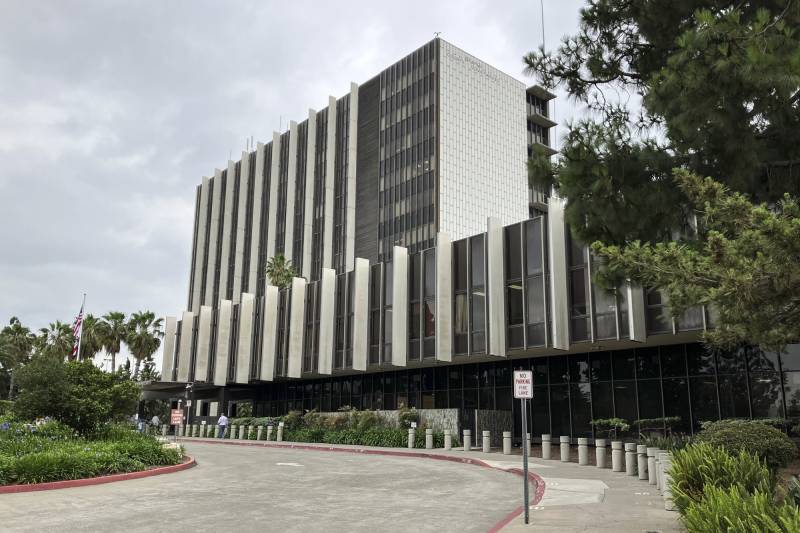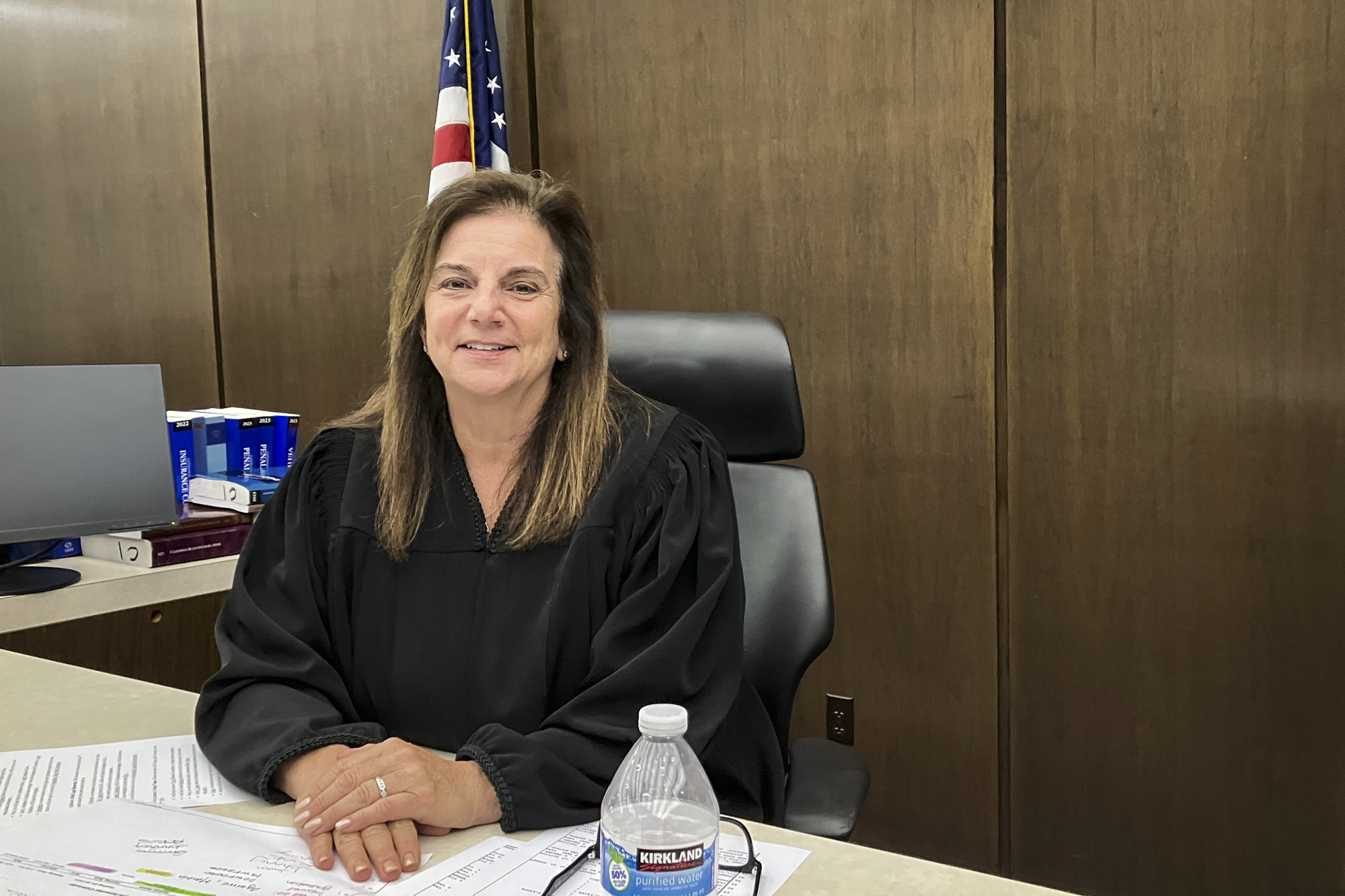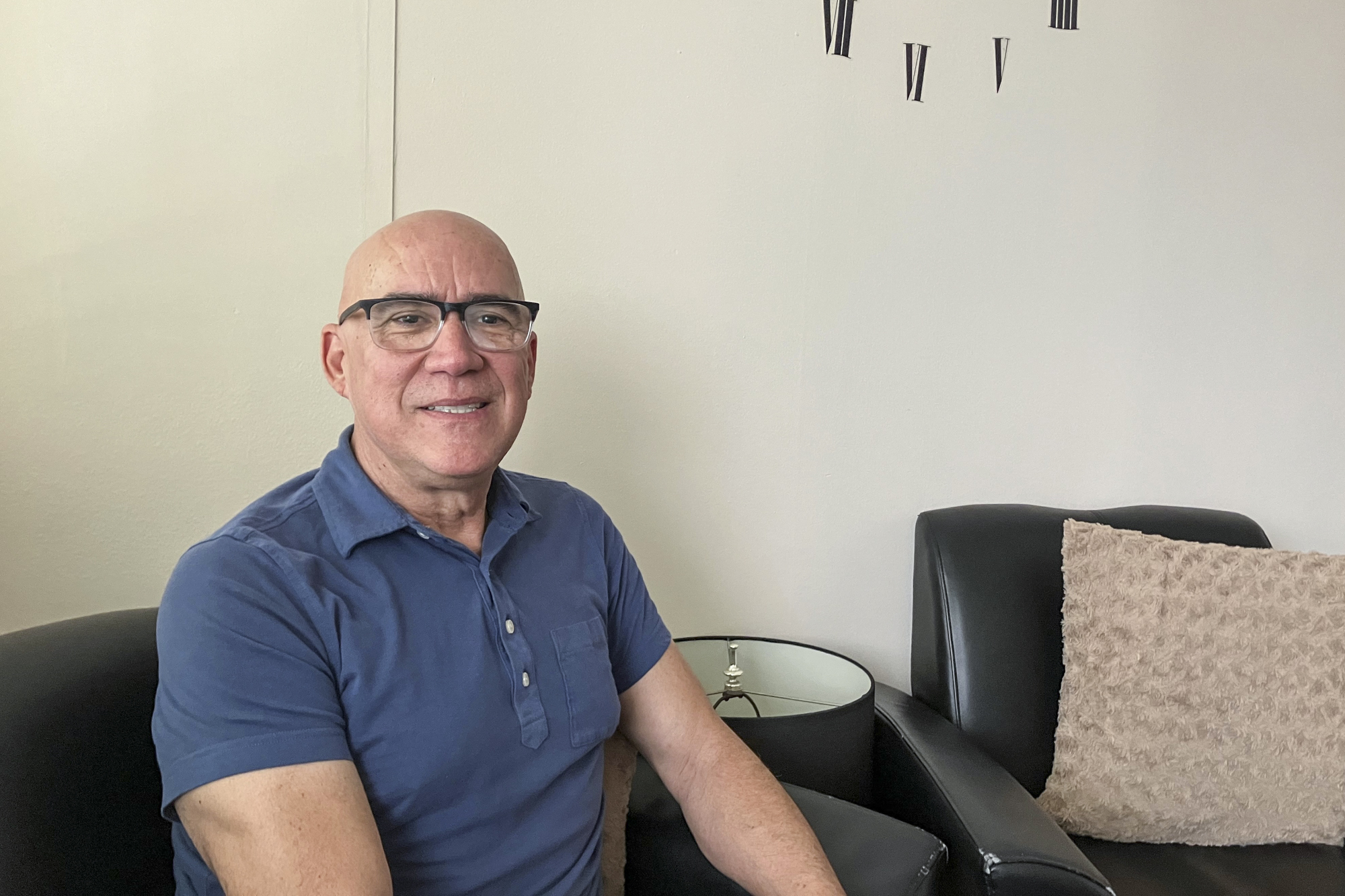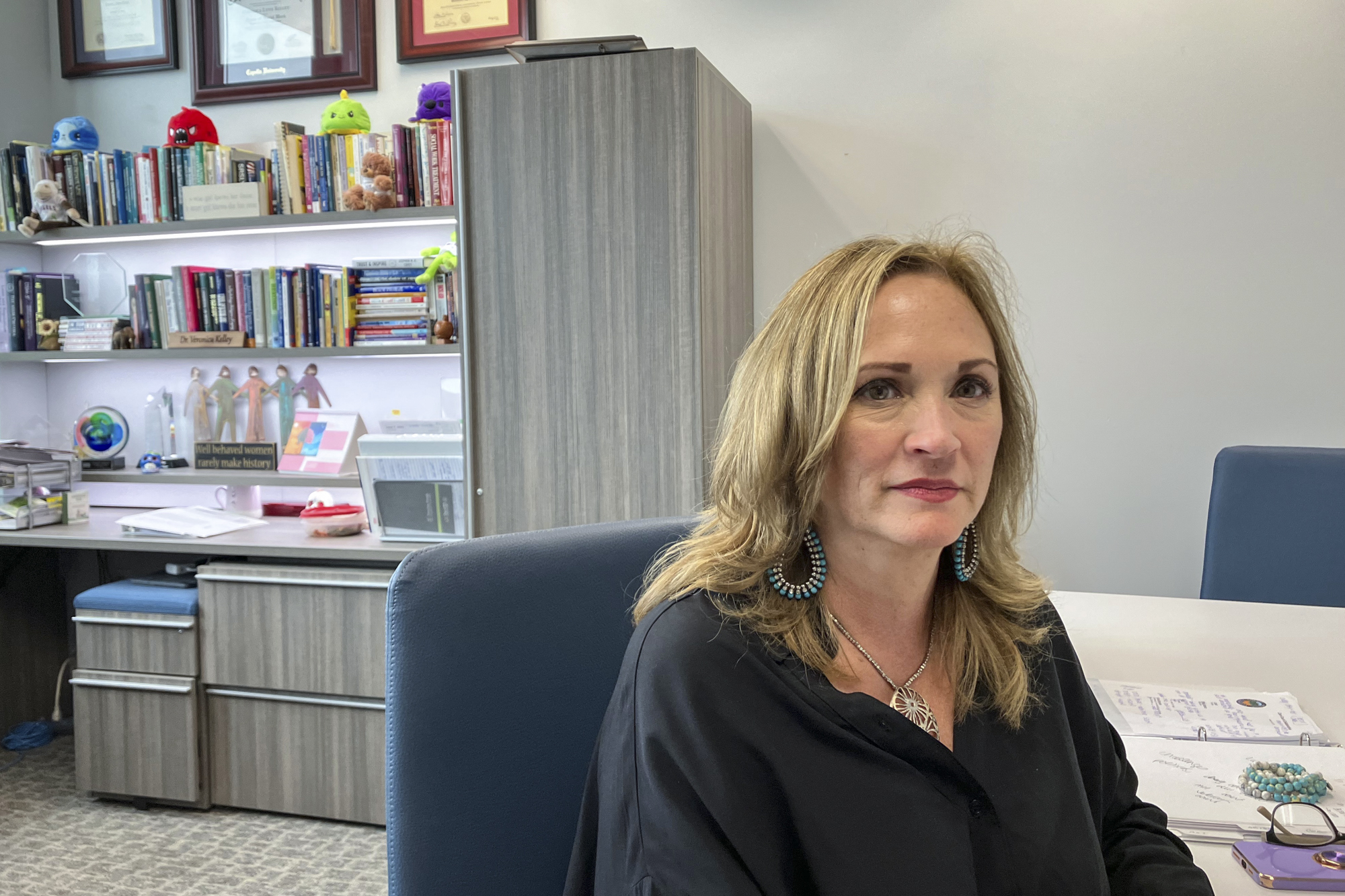Editor’s note: This story is part of an occasional series examining the rollout of CARE Courts across the state. Read or listen to KQED’s reporting on San Francisco County here.
When Heidi Sweeney first began hallucinating, the voices in her head told her Orange County’s Huntington Beach was where she would be safe. There, behind the bikini-clad crowds playing volleyball and riding beach cruisers, she slept in homeless encampments, then beside a bush outside a liquor store, drinking vodka to drown out the din only she could hear.
For years, she refused help, insisting to all who offered, “I’m not sick,” until police arrested her for petty theft and public drunkenness. A judge gave her an ultimatum: jail, or treatment. She chose treatment.
“I’m so thankful that they did that,” said Sweeney, now 52. “I needed that. I think there’s others out there that need it, too.”
If she hadn’t been compelled to get care, Sweeney said she wouldn’t be alive today, back at work and reunited with her husband. It’s why she supports California’s new civil CARE Courts, which will launch this fall in eight counties, including San Francisco, Los Angeles and Orange, followed by the rest of the state in 2024.



